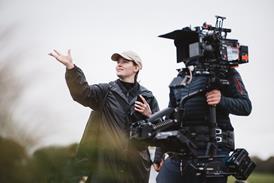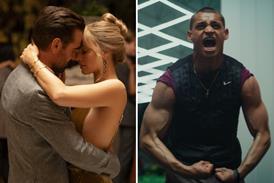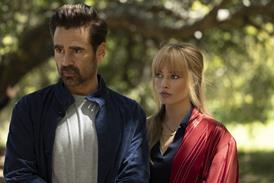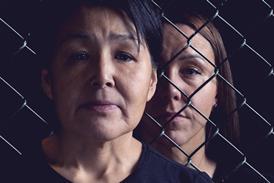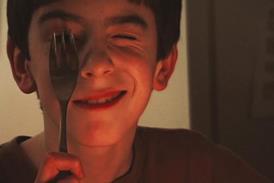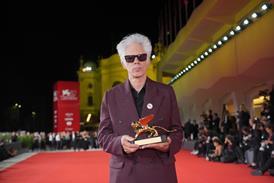Matt Dillon and Mia McKenna-Bruce also star in this uneven adaptation of the 1979 play ‘Black Battles With Dogs’
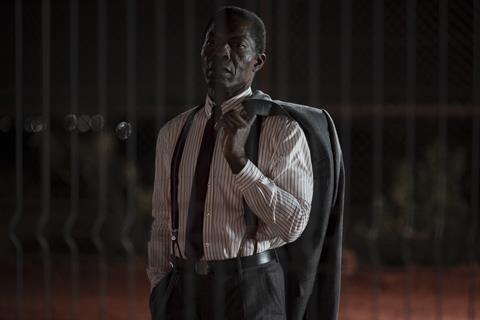
Dir: Claire Denis. France. 2025. 107mins
A construction site in West Africa plays host to a long dark night of the soul in the latest drama from Claire Denis, which turns French writer Bernad-Marie Koltes’ 1979 play Black Battles With Dogs into an atmospheric if uneven noir-tinged thriller. Essentially a four-handed chamber piece of sorts, this adaptation deals with powder-keg themes of the colonial psyche, racial tensions and retribution, but ultimately proves too stilted and stagey to pack much of a punch.
De Bankolé gives the film’s lynchpin performance
Nevertheless, The Fence follows in the Denis tradition of enigmatic studies of individuals in crisis, and the inexorable relationship between the physical and the ideological. The director’s fans should seek out her third English language film - after High Life (2018) and Stars At Noon (2002) - as it plays San Sebastian then New York and London in the wake of its Toronto premiere; an arthouse release could also follow.
The Fence sees Denis returning to colonial French Africa, where she was raised and which she has explored in previous films including her 1988 debut Chocolat, Beau Travail (1999) and White Material (2009). While not as sharply-drawn as those works, her latest does share key similarities. Chocolat star and regular Denis collaborator Isaach de Bankolé plays a central role here, and it recalls White Material’s central conceit of foolhardy Occidental characters standing their ground in land which is not theirs to defend.
Here, that falls to construction site worker Horn who, in a change from Koltes’ original French character, is an American played with a lived-in weariness by Matt Dillon. Horn and his largely African workforce build roads and infrastructure supposed to bring prosperity to the region. This night, however, Horn is preparing for the arrival from London of his new wife Leonie (Mia McKenna-Bruce), but celebrations are jeopardised by local villager Alboury (de Bankolé), who is determined to collect the body of his brother who was killed, supposedly, in an on-site accident. With Horn’s highly-strung British colleague Cal (Tom Blyth) growing increasingly agitated, and Alboury refusing to leave, tensions slowly build.
The film’s title most obviously refers to the huge metal fence which separates the site from the surrounding landscape, through which Horn and Alboury have an ongoing conversation – mostly about the whereabouts of the body, but with occasional non-sequiturs about marriage and women, faith and responsibility. Much of this dialogue is clunky and blunt-edged, and the actors struggle to plough their way through it.
Cinematography, from Eric Gautier, is more naturally expressive, capturing the shadows that play across the men’s faces, the looming shapes of the guard towers, the sickly unnatural light inside the storage container bunks. Close ups of wilting flowers in the ground give a pop of fading colour, and take on a melancholy meaning as the story progresses.
When Leonie arrives, the dynamic changes. While not having much agency beyond what her presence could mean for the assembled men, How To Have Sex breakout star McKenna-Bruce lends the character a vulnerable innocence; a witness to her husband trying to plead, intimidate and bribe his way out of a situation he has obviously been in before. She also fares well with the dialogue, bringing an authentic register to lines like “I feel like a tiny grain of sand.” Yet, while having her totter around the dusty site in stiletto shoes and, later, a silky red camisole may underscore her fish-out-of-water qualities – or the potential clash of desire and violence she could incite – such moments feel like dated dramatic shorthand.
The fence is, of course, also representative of the cultural and emotional barriers at play: between Horn and Alboury, between Leonie and this alien environment, between Cal and a terrible truth he is unwilling to acknowledge. As Cal, Blyth positively fizzes with swaggering machismo, which gradually begins to curdle as those buried truths start to surface. While creative choices are rather on the nose – early on, Cal listens to Midnight Oil’s protest song ‘Beds Are Burning’ and later has a shower which runs black with filth – Blyth keeps a tight grip on his character.
Despite being hamstrung by that ripped-off-the-page dialogue, Dillon is solid as the increasingly desperate Horn, unwilling to take any responsibility for what has transpired and painting himself as a victim. But he finds himself coming undone under the unwavering gaze of Alboury, who remains rigid and resolute on the other side of the fence. De Bankolé gives the film’s lynchpin performance, his clear eyes and measured expression saying more about this enduring imbalance of power than words ever could.
Production companies: Vixens, Curiosa Films, Saint Laurent Productions, ARTE France Cinema
International sales: Goodfellas, feripret@goodfellas.film
Producers: Gary Farkas, Olivier Delbosc, Anthony Vaccarello
Screenplay: Andrew Litvack, Suzanne Lindon, Claire Denis, based on the play ‘Black Battles With Dogs’ by Bernad-Marie Koltes
Cinematography: Eric Gautier
Production design: Thierry Flamand, Oumar Sall
Editing: Guy Lecorne
Music: Tindersticks
Main cast: Isaach de Bankolé, Matt Dillon, Mia McKenna-Bruce, Tom Blyth



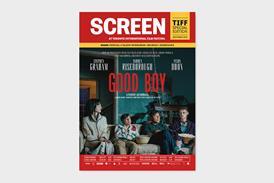
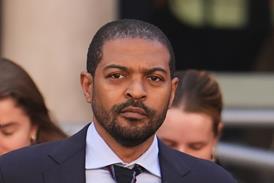


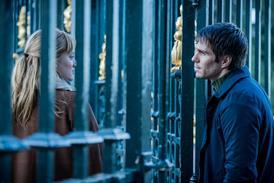
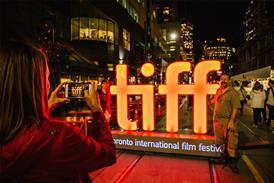
![[Clockwise from top left]: 'The Voice Of Hind Rajab', 'A House Of Dynamite', 'Jay Kelly', 'After The Hunt', 'The Smashing Machine'](https://d1nslcd7m2225b.cloudfront.net/Pictures/274x183/1/7/0/1459170_veniceawards_837515.jpg)
